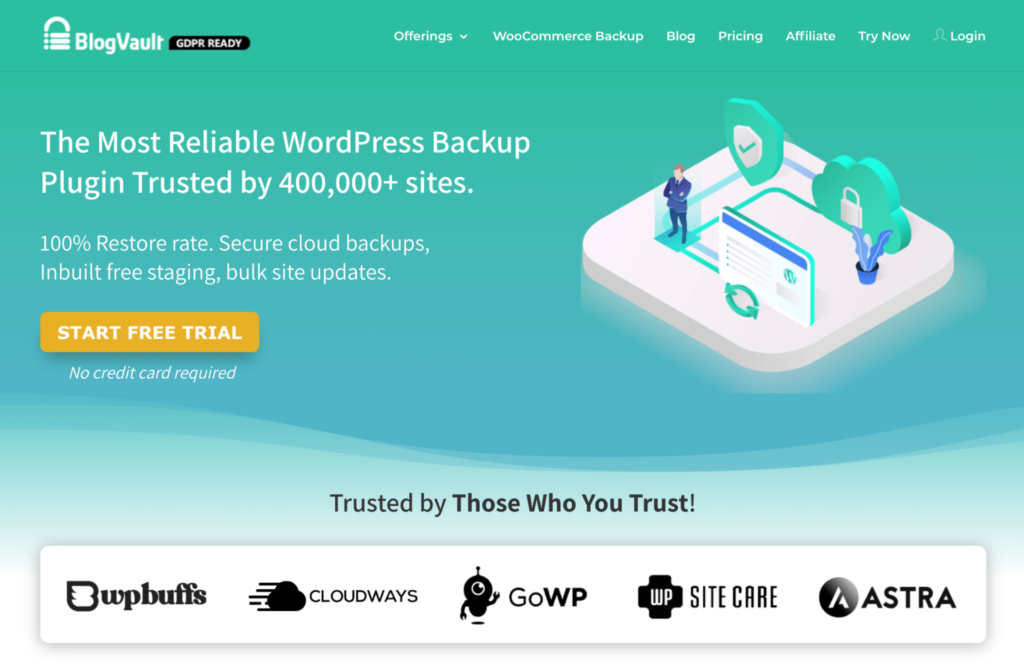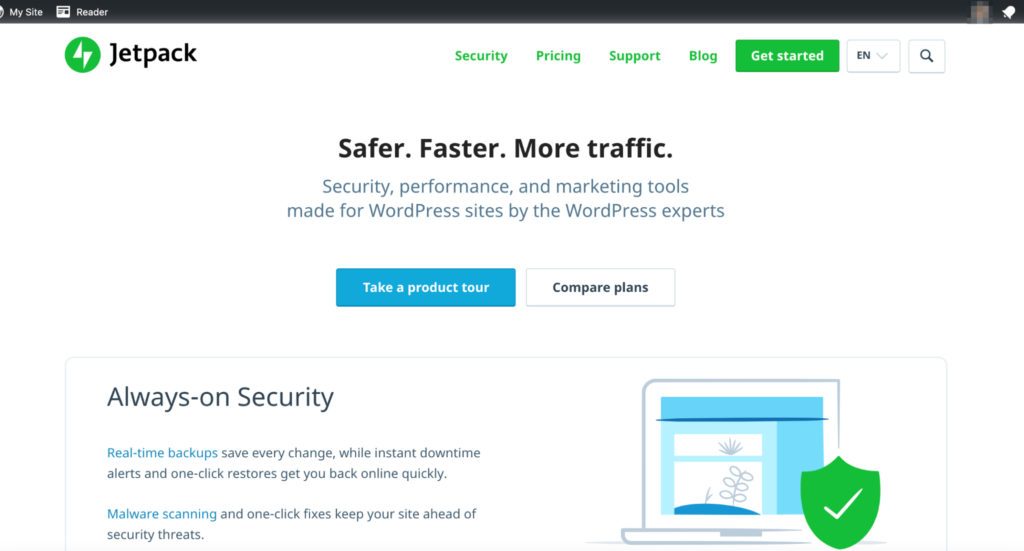WordPress disasters are unpredictable and varied. You can mess up a page, accidentally delete a blog post, or lose crucial website data. While you cannot prevent accidents from happening, you can have a backup in place.
Backing up a website is the process of creating full copies of your website and its content. Even though having a backup is incredibly important, most website owners still overlook it.
To make sure you don’t overlook something so important, I’ll tell you everything you need to know about WordPress backups and how to implement them.
Let’s begin, shall we?
What Is a WordPress Backup?
A backup is a copy of the database and files that make up your whole website.
Your website files contain all of the core installation files, plugins, and themes necessary to run your WordPress site. They are stored inside the main directory called public_html by default. The WordPress database stores website data that includes posts, comments, pages, links, and tags.
If you don’t back up your WordPress site, you’ll be left with a blank canvas and have to recreate it from scratch should something happen.
In short, you need to backup your WordPress website now.
5 Tools to Improve WordPress Backup
There are tons of options when it comes to improving your WordPress backup. From encrypting sensitive information to creating a staging environment to testing data restore, you can do so many things to improve your site backup process and prevent lost data.
Below, I’ve compiled a list of tools that are user-friendly, effective, and efficient. Let’s take a quick look.
BlogVault
BlogVault is an incredibly intuitive backup plugin that offers easy migration, lots of great features, and affordable subscription plans. You don’t need to worry about backups even when your website is down—BlogVault takes complete care of it.
What’s more, you can create multiple backup copies of your website and upload them into third-party storage sites like Google Drive. Automatic backups ensure you always have the most up-to-date site version.
Jetpack
Jetpack lets you backup your WordPress website and also scans it for any malware. And true to its name, the backup process is carried out at jet-like speeds.
You can choose between real-time backups and daily backups. While the former comes with unlimited backup archives, one-click restore, and an unlimited log of site changes, the latter includes a 30-day backup archive, one-click restore, and a 30-day record of site changes.
Folder Lock
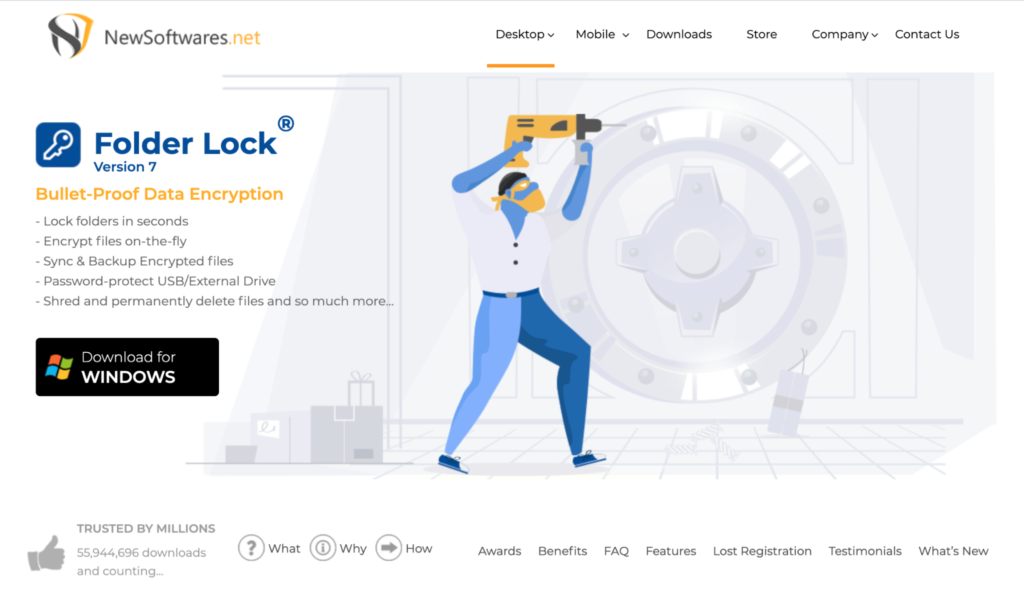
A backup of your WordPress site will contain all your website data, including passwords and sensitive information. If a cybercriminal gets their hands on it, they’ll pretty much have all the information they need, which is why encryption is so important.
Folder Lock is encryption software that can lock access to files to provide quick and easy protection. It comes packed with several useful features, making data protection super easy when combined with the user-friendly interface.
WP Staging
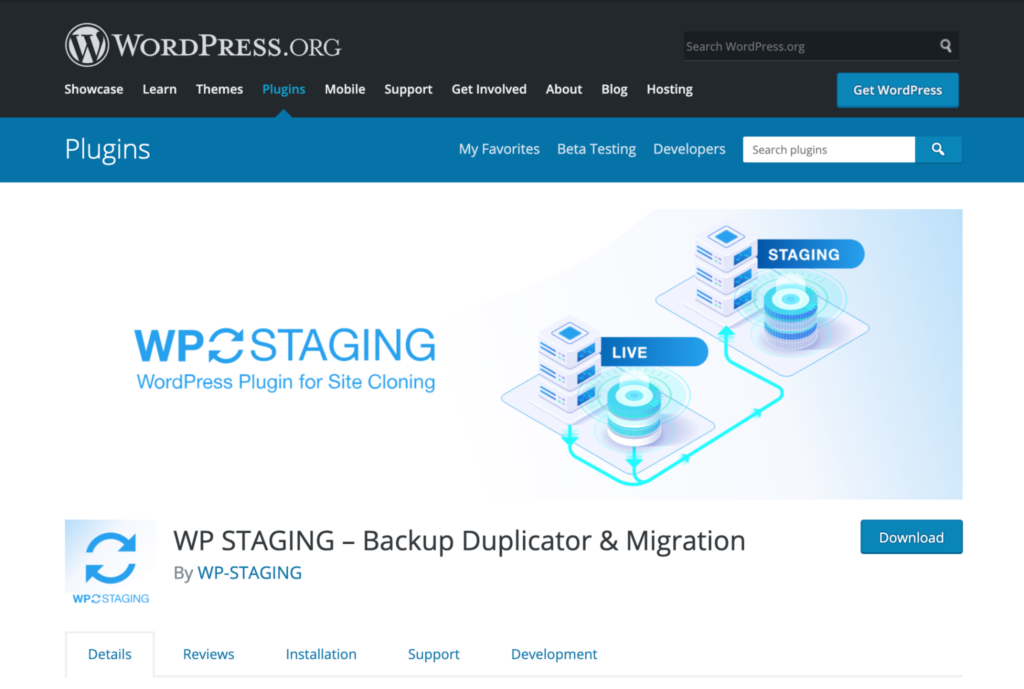
The whole point of creating a backup is to restore your site. If it doesn’t work, then all your efforts will go in vain. Precisely why I recommend testing restore as a precautionary measure. You can test out the backup by creating a staging environment.
WP Staging is an excellent staging plugin that makes it easy to clone your WordPress website. The sites are housed on your own server, and no data is shared with the plugin developers.
Don’t want to do all the hard work? Then don’t!
You can automate your WordPress backups by simply installing and activating a plugin. Here are a few of the best WordPress plugins available right now:
UpdraftPlus
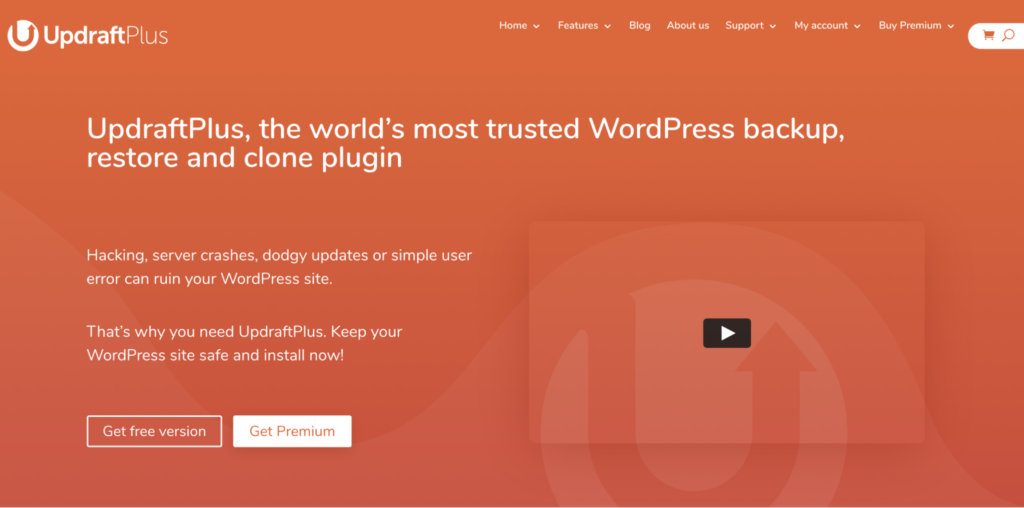
UpdraftPlus is another easy-to-use and popular backup plugin best for individuals with no technical experience. You can set up hourly to monthly automatic backups and access all of your current backups directly from the dashboard.
Also, you can choose to manually manage the plugin, giving you the option to restore, clone, and migrate your site in addition to the backup buttons. UpdraftPlus is also very fast, so it uses fewer server resources.
The Basics of WordPress Backups
A website backup is like an insurance policy that protects you from wasting all the effort, time, and money you’ve invested in your website. Read on as I explain how to nail backups and protect your data from hackers, human errors, and compatibility problems.
Following Backup Rules Will Always Protect Your Data
You can simplify your backup process—all you have to do is follow a set of rules. I’ve created a list of the three rules that can help ensure your content backup remains up to date.
Regular Automated Backups
It isn’t possible to back up all your data at once, which is why I recommend automating regular backups of your website.
Regular backups are done at predetermined intervals—you can have weekly or hourly backups, for example. When you automate them, your website will store all the data on an offsite location like Google Drive or Dropbox.
In addition to this, you must also have at least two backups of your WordPress website. This way, all your data will remain protected if one backup gets corrupted or lost.
When Publishing Something Important
Suppose you’re hosting a giveaway, which brings a lot of traffic to your website.
In this case, you must run a backup of your website immediately, so if you lose access to website data accidentally, you won’t have to worry. You can then simply recreate the whole scenario by restoring the backed-up data.
This rule only applies to backups taken on an ad-hoc basis and not for general use.
Three Copies
This backup rule applies to all WordPress website backups.
Here, you’ll create three copies of your WordPress backup and then store each one in a different location. For example, you can store one copy of your backup on your system, one in Google Drive, and another on Dropbox.
Don’t Solely Rely on Your Hosting Company for Backups
You shouldn’t rely on your hosting company to back up your WordPress site. Most of them don’t even offer backups.
Plus, there are so many questions to think about: Are you sure your hosting company makes regular backups? How often do they make them? How easy is it to restore the backup? How long does the restoration process take? More importantly, should you leave the safety of your site in the hosting company’s hands?
The only way to guarantee you have a full, most recent backup of your site is to do it yourself.
Backups Should Contain All Crucial Files
The term “website backup” is very vague.
Every backup is made up of different things, and your job is to know what these pieces are and how they fit into one another. You only need to be concerned about three things: the database, media files, and plugins and themes.
#1. Database
Your WordPress database is where all the important information about your website is stored.
It contains usernames, user’s names, emails, and passwords. It also has posts, comments, and other crucial information related to your website.
#2. Media Files
Your media files comprise the graphics, videos, and other visual assets you’ve stored on your WordPress site. Generally, these are stored independently and are just pointed to from the database.
While your WordPress site can run without the media files, if they don’t make a backup or get corrupted, all the places where these files are supposed to show will be blank—and putting it back together will take anywhere from hours to days to weeks.
Do you see why it’s much better to just include them in your backup?
#3. Plugin and Theme Files
If your database has the information and the media files are your assets, your plugin and theme files are all the instructions. Think of them as the director of your site content.
They contain all the themes you’ve installed to date—even the inactive ones. Plus, it also retains any customized codes of the parent theme to achieve functionalities that may not be built-in.
Plugin files are also crucial. The fact that you took the pain to install them means you want to activate a specific feature of the website, and now without them, your WordPress site may not work properly or even at all.
Restoring the Site Isn’t the Final Task
If you think you can rest easy after restoring your backup, we have news for you: You can’t.
The first thing on your to-do list after successfully restoring your website is to improve your website security. After that, you must make sure you have a regular backup of your website by installing a backup plugin.
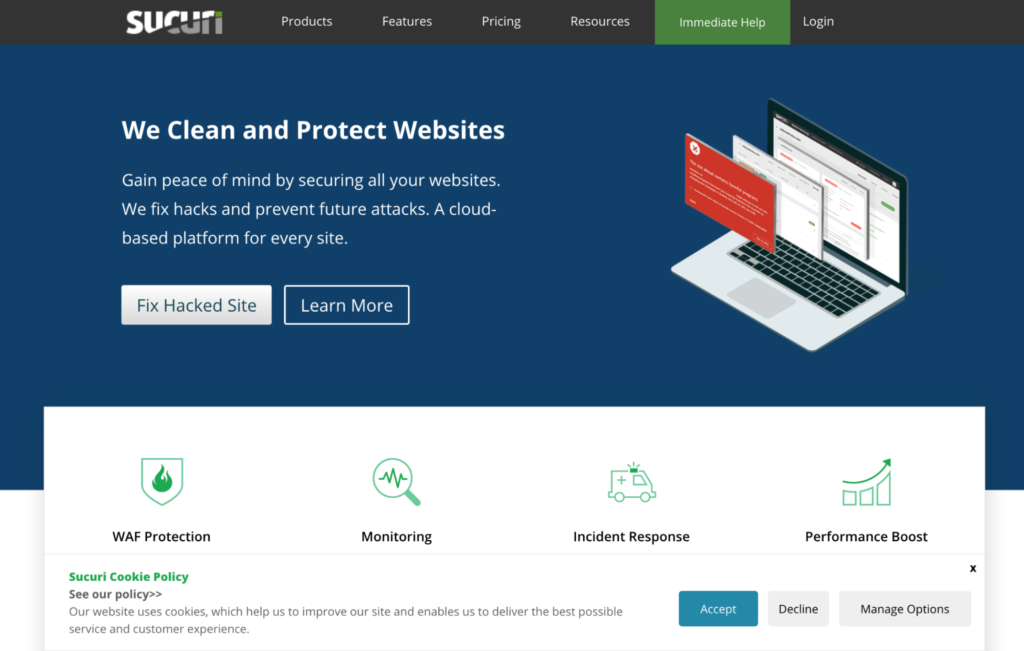
Although optional, I recommend installing a website firewall. Tools like Sucuri let you monitor your website for security threats and remove malware while simultaneously strengthening your website security.
4 Tricks for WordPress Backups
There’s always room for improvement, and your WordPress backup is no exception. Here are a few tips to help you keep your data safe.
Choosing the Right Backup Plugin
You can easily backup your website using a plugin—provided you select the right one.
You’ll find several backup plugins that can help you automate and manage backups. Keep in mind if your website is bulky, you’ll need a plugin that can handle incremental backups.
Look for plugin tools that also take care of restoring a backup to avoid future issues.
Ensuring Frequent Backups
Think about the frequency of your posts. If you post every day, it’s best to back up your website more frequently. If you post twice a month, you can stick to monthly backups.
You can consider different backup schedules for various parts of your site. For instance, you can back up the database more frequently as it’s where your posts are stored and back up your themes and plugins less frequently if you’re not changing them regularly.
Always Text Your Backups
Backups aren’t a foolproof guarantee. They can become corrupted or not include all your files if you run out of storage space. Moreover, your backup plugin could experience compatibility issues or bugs.
For these reasons, you must test the backups to ensure your files are present and easily accessible.
While you can test the backup in a staging environment, copying the zip file from the backup to another location and inspecting the contents without restoring the entire site is a faster alternative.
Store Your Backup on an Offsite Location
You should maintain copies of backups in different places like USB drives, external hard drives, or the cloud. Even better if you upload copies to all three. This way, if one copy is lost, you can have an offsite fallback in a safe place to restore your data.
In other words, you should try to avoid storing your backups on the same server or computer as your website. Although local backups are useful when you want to undo the most recent changes, they won’t be of any help if your computer is down. Potential hosting hiccups can make your backup stored on the server failed as well.
This may seem like overkill, but considering what’s at stake, the effort is worth it.
from Quick Sprout https://ift.tt/3trCNsN
via IFTTT
